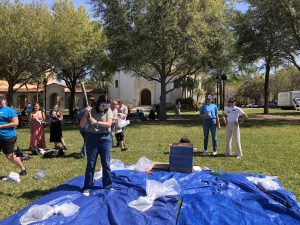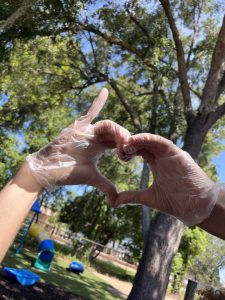 Peter Ruiz ‘15 provides a firsthand account on how the CICI merger has affected his life and the lives of other minority students on campus.
Peter Ruiz ‘15 provides a firsthand account on how the CICI merger has affected his life and the lives of other minority students on campus.
I am someone who has been actively involved in diversity and inclusion work on this campus since my freshman year. I am a multiracial, multi-ethnic, queer, homeless, Wiccan, feminist, and cisgender male. Yeah, I realize that is a lot. I also realize that this is intrinsically who I am. My journey here at Rollins is intertwined with the explorations of these identities and the exploration of these identities has been intertwined with my experiences with the Office of Multicultural Affairs (OMA).
I came into the idea of the merger with an apprehensive but open heart. I was apprehensive because, as a minority student across a multitude of my identities, OMA has been my space to be my authentic self, and has given me the strength to be able to be my authentic self in all facets of my life. I felt that somehow in the merger I was losing the place that allowed this opportunity. I was open to the idea because I thought it would be wonderful to have all the student leaders on campus in one place. I was hopeful to see collaborations between groups which had not collaborated before. I wanted others to be given the same tools of identity exploration given to me in my time here at Rollins.
What I have found is that my home, my anchor if you will, has been stolen from underneath me. I no longer have my safe space. The Center for Inclusion and Campus Involvement (CICI) office feels hostile and foreign. I go into work—I am a work study for Diversity and Inclusion initiatives—and hide in the office of Zakiya Brown, my last remnant of OMA. I do this because of the hostility created over micro-aggressions heard around the office. Whether there are students discussing whether or not they find an entire minority group of people unattractive or staff members making uneducated and hurtful statements about Indian people speaking Indian and arguing when students of Indian descent correct them.
One of the results of our climate survey last year was that minority/marginalized students feel like they are not welcome at Rollins. So how does taking the office meant to combat that exact feeling and making it a small part of a larger office help with that? I think it does not, and I am not the only one who feels that way. Camilo Garcon ’15 said, “Before we had a place where all different minorities and identities had a place to be, feel safe, and be heard. I am never there. Not because I don’t want to be, but because it doesn’t feel like the place I used to work. I feel fine going to Abby’s office and interacting with her, but the merger made the issue seem smaller and less important.”
I think safe spaces are vital, particularly for individuals who are constantly told that their value is less. When that safe space is diminished, it says that while we think it is important to talk about these things, we do not think the issue needs its own space. Effectively, what the merger did is bring the majority into the one space on campus that was carved out for the minority.
Other students do have a two-sides-to-the-coin point of view. “In one aspect, I think it’s bad because there is this loss of space that is completely devoted to minorities on campus. It was a good way of having a place where everyone could come and be unified. However, I do think that it was important to combine all these places. It in my opinion showed that it wasn’t a place just for minorities of skin color. It is a place for any and everyone who is interested in becoming a stronger leader and submerging themselves in diversity and social justice, which is beautiful in itself to have on campus,” said Rayshaun Wagner ’17.
I am a student in mourning. I am mourning the loss of my home on this campus. I am mourning the loss of my sense of safety and security. I am mourning over the fact that there is a Peter Ruiz in the class of 2018 searching for their OMA who will not find it. They will find this tiny office cramped with minority students who feel like this is their only space. This merger has officially ghettoized the minority student population.
But even as I feel this loss, I realize that this change is happening. I, and others like me, must not only adapt to the changes, but bring the others in the space to where we all feel comfortable. Growth can only happen when one is uncomfortable. This is an opportunity for all of us involved in the merger to learn from one another.
What I bring to the table is a lot of diversity, social justice, and cultural competency experience. This is a valuable skill when talking about global citizenship. To be a global citizen, one has to be able to analyze and tackle the gross inequities in our world. Abby Hollern, the director of CICI, reflected on this: “I think merging the two areas is intentional and allows [that] diversity and social justice is everyone’s issues.” But I also realize there are skills I am lacking. Yes, I am able to discuss social justice issues, and I do in my everyday life, but how do I convey it in such a way that is palatable to a wider audience?
I think having individuals in Fraternity and Sorority Life (FSL), for example, around to talk to can help me with that. If there is one skill I think that can be gained from FSL on this campus, it is marketing. These individuals know how to be marketable and visible. FSL makes up about one-third of our population, but I hear students often saying that FSL makes up half our campus. This is due to their ability to be ever-present. This is a skill I wish to develop.
This was the intent of the merger. Both groups have things to learn from each other. In a conversation with Vice President of Student Affairs Dr. Mamta Accapadi, she said, “This is a vision that emerged from students. In leadership spaces they thought there wasn’t enough awareness of diversity and social justice happening. In spaces where diversity work was happening there wasn’t necessarily leadership growth. We were siloing two different pieces.”
The process of combining these spaces is a way for diversity to be infused in all parts of campus. My discussion with Dr. Accapadi made it clear that this idea was brought forth by students, and that students really can take hold of the merger and shape it to what we want it to be. “Anytime you have two families coming together, there are going to be growing pains,” said Dr. Accapadi. This is very true. We are still in an awkward adjustment phase with the office.
Trainings need to be had and cultural competency needs to occur. But overall this merger is meant to make diversity and inclusion an issue for everyone, not just the issue of marginalized students. We as students who were formerly part of either office must begin to engage one another in order to create comfort in the office. We have to move past the fact that the offices we originally joined are gone and move into a future, even if this means uncomfortable conversation or if this means having to call one another out. Our success is based on our ability to grow with each other.







Peter- thank you for sharing your thoughtful piece. Looking forward to continuing to work with you, faculty and CICI staff to support student learning, growth and inclusion at Rollins and beyond.
Micki